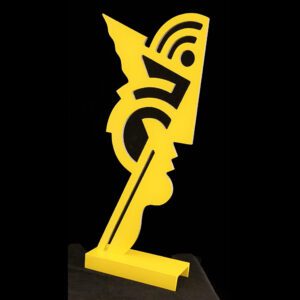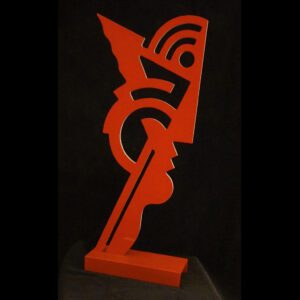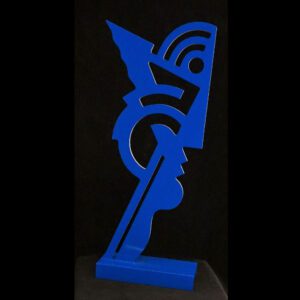Artist Profile
Roy Lichtenstein (1923-1997) Along with his Pop peer, Andy Warhol, Roy gave visual expression to the ironic and freeze-dried zeitgeist of the 1960s and 1970s. His stylized world of commercial imagery and primary color changed the landscape of American art. He forced a reassessment of what was vulgar and serious, satire and homage, mechanical and handmade. He also prefigured the appropriation of future generations of artists such as Richard Pettibone, Richard Prince and Jeff Koons.
Roy Lichtenstein studied under Reginald Marsh and Hoyt L. Sherman. He worked briefly as an engineer before obtaining teaching positions at the State University of New York, Oswego and Douglass Residential College, a division of Rutgers University in New Brunswick, New Jersey. There he met artists Jim Dine, Allan Kaprow, Claes Oldenburg, Lucas Samaras, George Segal, and Robert Whitman, all of whom were experimenting with different kinds of art based on everyday life and far afield from the work of Abstract Expressionists like Jackson Pollack, Willem de Kooning, Franz Kline and Mark Rothko.
In 1961 Lichtenstein began scavenging advertisements and comics like ''Winnie Winkle,'' ''G.I. Combat'' and ''Secret Hearts'' (''I don't care! I'd rather sink -- than call Brad for help!'') as source material. From these comic-strip panels and figures he made painstaking paintings composed from Benday-dot grounds with lettered text in thought balloons. The imagery is flat. The text, when present, invariably overwrought and emotional. Lichtenstein’s Pop paintings debuted in 1962 at the Leo Castelli Gallery, which held regular exhibitions of his work thereafter until his death. At Castelli’s he joined a group of artists that included Robert Rauschenberg and Jasper Johns and, shortly after, Andy Warhol.
For the next 45 years Lichtenstein remained at the forefront of the American art world, depicting stylized landscapes, consumer-product packaging, adaptations of famous paintings, geometric elements from Art Deco design (in the Modern series), parodies of the Abstract Expressionists’ style (in the Brushstrokes series), explosions, nudes and Chinese landscapes. He participated in the Venice Biennale in 1966, and was honored with solo exhibitions in 1967 and 1968 at the Pasadena Art Museum and the Solomon R. Guggenheim Museum, New York, respectively. The artist was the subject of a major retrospective at the Guggenheim in 1994, three years before his death. ROY LICHTENSTEIN MODERN HEAD SERIES In 1966, while working on the Brushstrokes Series, Roy Lichtenstein created a poster for New York's Lincoln Center inspired by the architecture and design of the 20's and 30's.
The creation of Lichtenstein's Lincoln Center poster eventually influenced a series of paintings, prints and sculpture that parodied the style of Art Deco, which the Artist ironically described as cubism for the home. Like the Landscapes paintings that preceded them, Roy Lichtenstein Modern Head Series is among a select few pieces in his oeuvre that does not reference a specific artist or object. The Modern Head Series is based on one of Roy Lichtenstein's favored formal ideas: impure style.
In his Modern Head Series of paintings, sculptures and prints, Roy Lichtenstein essentially stylized an already "stylized" style. For the Modern Head Series, Roy Lichtenstein re-configured decorative motifs of the era including brass ornamentation and geometric wallpaper, which are evident in the skyscrapers, theater marquees and plush interiors of Art Deco landmarks like the Chrysler Building and Radio City Music Hall. Referencing the style of Art Deco, Roy Lichtenstein's Modern Head Series strikes a balance between verticals and diagonals, curves and straight edges, dynamic and static forms. Roy Lichtenstein's Modern Head Series was created with the premise that the profile of a man resembles a machine with the image manufactured by an industrial source. Roy Lichtenstein's shimmering Untitled Head I brass sculpture references the flat planes, precision, and abstract geometric forms associated with 30's Art Deco architecture and design. Other examples of Roy Lichtenstein Untitled Head I brass sculpture are in the Collections of the National Gallery of Art and Walker





